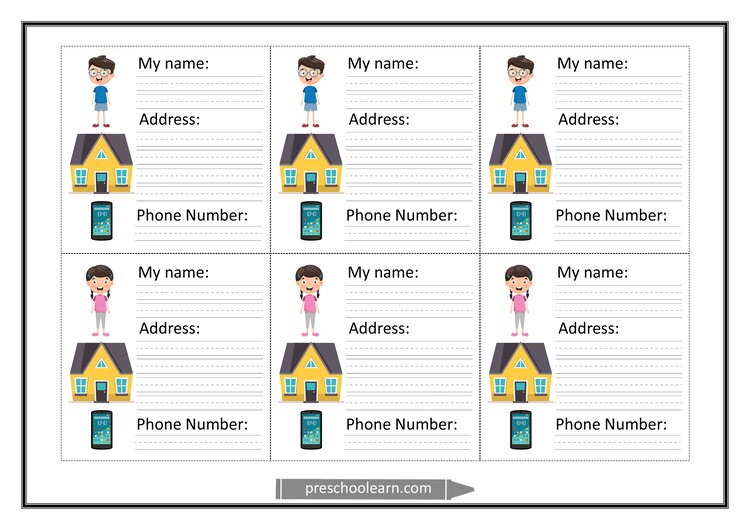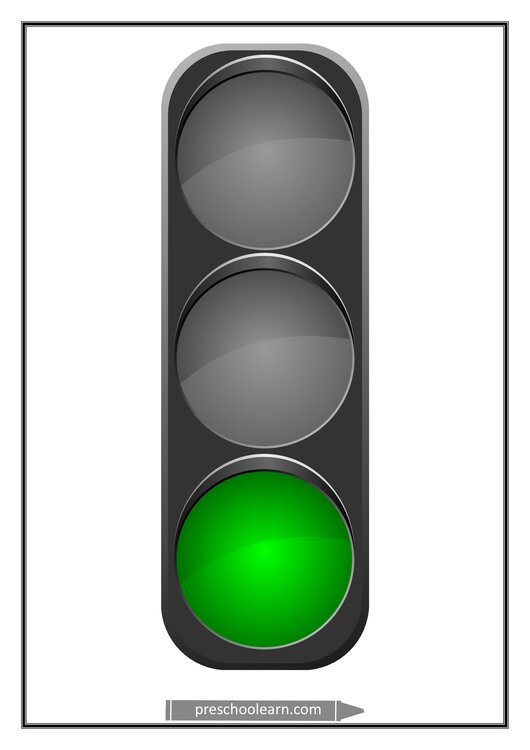Kindergarteners will watch the stories about Grey – a baby swan, who got lost in the shopping center. They will learn what should they do if they get lost, practice remembering their address, do a worksheet entitled “Personal Information”, and learn the second part of a song entitled “Red Light Red Light What Do You Say?”.
Materials:
a cartoon entitled “Baby Swam Got Lost”, sheets with home addresses and phone numbers of each child, a song entitled “On the Street”, a song entitled “Learn your address”, a song entitled “Postman”, envelopes with the addresses of each child, a worksheet entitled “Personal Information”, pencil, crayons, Backpack tags, a song entitled “Red Light Red Light What Do You Say?”, picture card with a traffic light with different lights.
Activity description:
1. ‘Magic finger’ – greeting children – children with their teacher sit in a circle. Teacher says the nursery rhyme and shows the correct movements. Children try to imitate them. Repeat it twice.
Magic finger in the air (move pointing finger in the air)
Magic finger everywhere
Magic finger on your hips (put pointing finger on your hips)
Magic finger on your lips! (put pointing finger on your lips)
2. “Baby Swam Got Lost” – watching a cartoon – children sit comfortably in a circle and watch the cartoon.
Teacher asks children the following questions:
- What happened in the shopping center?
- What was the name of the kid?
- How did Grey feel?
- Did Grey know his mommy’s name?
- Did he know his mommy’s phone number?
- It was the correct phone number?
- Did he know his address?
- What did Grey remember about his house?
- What happened in the house near the pond?
- Who did help find Grey’s mommy?
- Why police officer and Grey couldn’t pass a street?
- What happened next?
- Is it important to know your home address/parent’s phone number?
Important rules:
- When you go out with your parents, you should always stay close to them.
- If you lose them, stay where you are and wait for them, or ask a police officer/uniform adult for help.
- Make sure to memorize your parents’ phone numbers and your home address. It will help police officers find your parents.
3. “Close to my parent” – didactic and movement activity – children form pairs. One of the children is a “parent”, and the second one is a “child”. “Parents” move freely around the room, “children” try to stay close to their “parents”. From time to time change the roles in pairs.
4. “Do I know my home address?” – didactic activity – children sit comfortably in a circle and one by one give their name, surname, their home address, and phone number – in case of problems, teacher has their home addresses and phone numbers prepared and helps children.
5. “Who lives in X street?” – didactic and movement activity – children move freely on the carpet to the rhythm of a sing entitled “On the Street”. When the music stops, teacher asks: “Who lives in X street?”, and children who live on this street must line up. Continue the game by saying the name of each street where children from the group live.
6. “Learn your address” – didactic activity – teacher sings the song entitled “Learn your address” twice.
Learn your address
[YOUR NAME] is my name.
I’m so very glad you came.
[YOUR HOUSE NUMBER] is my house number.
[YOUR STREET] is where I slumber.
Now I know my whole address,
In [YOUR CITY NAME], yes, yes, yes!
Next, children repeat after their teacher every verse – filling the gaps with their personal details. After that, children one by one sing the song.
7. “Who is this letter to?” – didactic and movement activity – children run around the room to the rhythm of any music e.g. “Postman”. During a break in the music, they listen carefully to the addresses spoken by a teacher. When a given child hears his/her address, he/she runs to their teacher and takes the letter. Don’t open letters! Repeat the game until all children have an envelope.
8. “Personal Information” – worksheet – teacher asks children to go to the tables and asks them to open their envelopes. Next, teacher shows a worksheet and explains how they should do the task (write name, surname, home address, phone number, and emergency phone number. Color the right button/buttons on the phone and write the phone number in the box – parent’s number or emergency number). During the task, teacher walks between the tables and helps children if they need it.
9. “Backpack tags” – movement activity – children move freely on the carpet to the rhythm of “Red Light Red Light What Do You Say”. During a break in the music, they line up, and teacher gives them backpack tags that they will have to fill at home.
10. “Red Light Red Light What Do You Say” – learning the song – children sit in a circle with their teacher. They repeat after him/her the lyrics of the second part of the song and try to sing it.
11. “Lights” – movement activity – children move freely around the room while teacher shows a signal with a green light; they slow down/prepare to move when the yellow light is showing; they stop when teacher shows a red light. Repeat the game several times by changing the color of the light.
Attachments:
Worksheet entitled “Personal Information”
Backpack tags for the “Backpack tags” activity
Picture cards entitled “Red Light Red Light What Do You Say?”
Pages used:
- https://www.youtube.com/watch?v=-zkRoSqs_NQ&ab – a cartoon entitled “Baby Swan Got Lost”
- https://www.youtube.com/watch?v=JK3Ek4mc9PY&ab – a song entitled “On the Street” for the “Who lives in the X street?” activity
- https://www.youtube.com/watch?v=RIAbnZdSOzs&ab – a song entitled “Learn your address” to the activity “Learn your address”
- https://www.youtube.com/watch?v=ZSAtlJXd2g8&ab – a song entitled “Postman” to the activity “Who is this letter to?”
- https://www.youtube.com/watch?v=j2KGkFyCqY8 – a song entitled “Red Light Red Light What Do You Say?”



